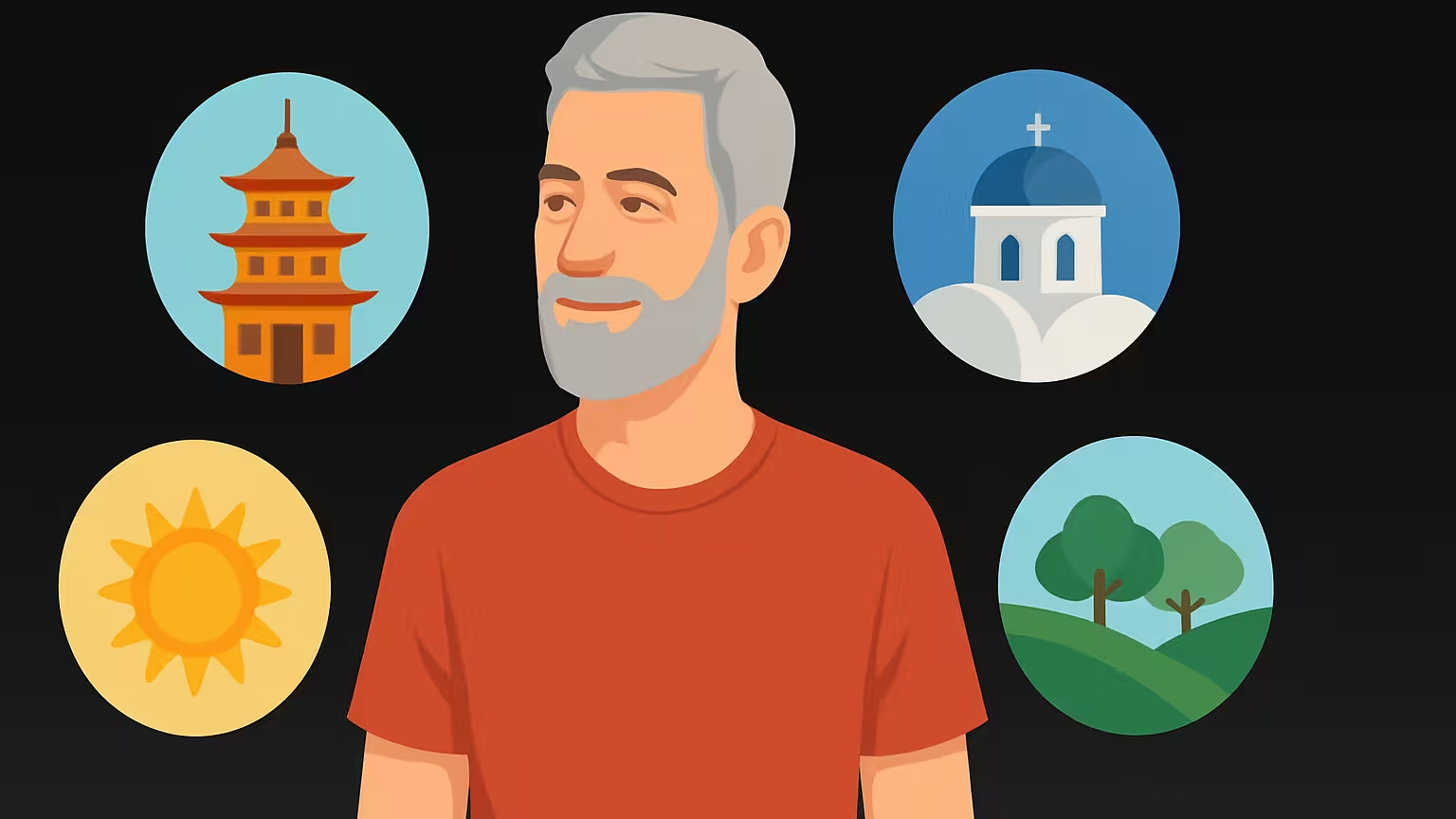Chronic disease is rising fast, but some rare communities live longer, healthier lives without relying on high-tech healthcare. These places are called Blue Zones — regions where people routinely live past 100 with little to no major illness.
National Geographic fellow Dan Buettner led researchers to uncover five of these long-living regions. These communities thrive not because of medical breakthroughs but due to natural movement, social support, and diet rooted in local traditions.
In this blog post, we reveal the exact lifestyle choices these people make — and how you can apply them today for a healthier, longer life.
Table of contents
What Are the Blue Zones?
Researchers found five key locations where people live the longest:
- Okinawa, Japan
- Sardinia, Italy
- Ikaria, Greece
- Nicoya Peninsula, Costa Rica
- Loma Linda, California, USA
Despite their differences in geography and culture, these areas share nine key habits that promote longevity.
Also read: The Power of Sleep: How to Improve Rest Without Pills
The Power 9™: Shared Habits of the Longest-Living People
1. Move Naturally
People in Blue Zones don’t exercise at the gym. They walk everywhere, garden, and perform daily chores without machines. Their homes and communities keep them moving.
2. Know Your Purpose
Every Blue Zone group has a deep sense of purpose. In Okinawa, it’s called Ikigai. In Costa Rica, it’s plan de vida. Knowing “why you wake up” can add up to seven years of life expectancy.
3. Downshift to Manage Stress
Stress shortens life. People in Blue Zones take breaks to relax and unwind daily. They pray, nap, or gather with loved ones to slow down and stay grounded.
4. Follow the 80% Rule
Okinawans stop eating when they feel 80% full. This helps prevent weight gain and gives the body time to signal fullness. Smaller meals mean less strain on metabolism.
5. Eat a Plant-Slanted Diet
All five regions eat mostly plants: vegetables, beans, legumes, and nuts. They use meat sparingly — often as a flavor, not the main dish.
6. Enjoy Wine at 5
In most Blue Zones, people enjoy one to two glasses of red wine each day with friends or food. Wine in moderation, especially with meals, may support heart health.
7. Belong to a Faith-Based Group
Nearly all long-living people in Blue Zones attend a place of worship weekly. Having a spiritual practice builds community and reduces stress.
8. Put Family First
Family is at the center of Blue Zone life. Elders live with their children. Families eat together, support one another, and pass down values and traditions.
9. Find Your Right Tribe
People in Blue Zones surround themselves with others who support healthy behavior. In Okinawa, lifelong friend groups called moais offer emotional and financial support.
What Makes Each Blue Zone Unique?
Okinawa, Japan 🇯🇵
Okinawan women have the longest life expectancy in the world. They eat sweet potatoes, bitter melon, tofu, and miso soup. Their community structure encourages emotional well-being and active aging. Okinawans practice Ikigai (purpose) and Moai (friendship groups), both tied to lower stress and longer life.
Sardinia, Italy 🇮🇹
This mountainous island has the most male centenarians on Earth. Sardinians stay active by shepherding and walking on steep hills daily. They eat whole-grain bread, beans, goat cheese, and drink Cannonau wine, rich in antioxidants. Strong family values and daily laughter strengthen their social health.
Ikaria, Greece 🇬🇷
People in Ikaria often live past 90 with minimal disease. They eat a Mediterranean diet full of olive oil, herbs, beans, and vegetables. Afternoon naps are normal, and locals gather daily to connect and share meals. They also drink herbal teas with anti-inflammatory properties.
Nicoya, Costa Rica 🇨🇷
Nicoyans live with purpose and enjoy simple routines. Their traditional diet includes corn tortillas, squash, black beans, and tropical fruits. Most work in agriculture or small businesses that keep them moving daily. Strong intergenerational homes build resilience and emotional strength.
Loma Linda, California 🇺🇸
Loma Linda’s Seventh-day Adventist community lives up to 10 years longer than the average American. Their faith encourages a vegetarian diet, weekly rest (Sabbath), and exercise like walking or swimming. They avoid alcohol, tobacco, and processed foods, focusing instead on whole foods and fellowship.
How You Can Apply Blue Zone Principles
You don’t have to move to Greece or Japan to live longer. You can apply their simple, research-backed habits to your everyday life.
Eat Mostly Plants
- Make vegetables, beans, and whole grains the center of your meals.
- Cut back on meat and processed foods.
- Snack on nuts instead of chips or candy.
Stay Physically Active — Naturally
- Walk more. Use stairs instead of elevators.
- Do your own chores, garden, or bike around town.
- Avoid sitting for long periods. Stand or stretch every hour.
Find Your Purpose
- Ask yourself what brings you joy and fulfillment.
- Volunteer or pick up hobbies that give you a reason to wake up.
- Create goals that align with your passions.
Build Strong Relationships
- Spend time with friends or family every day.
- Make meals social. Eat together without distractions like TV or phones.
- Reconnect with old friends or join groups with shared interests.
Manage Stress Every Day
- Meditate, pray, journal, or simply sit in silence for 10 minutes daily.
- Take breaks during work to reset your mind.
- Prioritize sleep and take short naps when needed.
Belong to a Community
- Join a local group, church, or club.
- Attend weekly meet-ups or community events.
- Strengthen your spiritual or religious practice if it fits your values.
The Science Behind the Blue Zones
The National Institute on Aging, Harvard School of Public Health, and World Health Organization all confirm that daily habits — not genetics — play the largest role in healthy aging. These studies prove that lifestyle can delay or even prevent diseases like diabetes, heart disease, dementia, and certain cancers.
Conclusion
People in Blue Zones live longer not because they chase longevity — but because they build lives filled with movement, connection, and meaning. They don’t rely on strict diets or gym memberships. Instead, they live in environments that naturally support well-being.
You can start today. Walk instead of drive. Cook meals from scratch. Laugh with a friend. Choose purpose over pressure.
Your longevity journey begins with one simple habit — practiced consistently.





